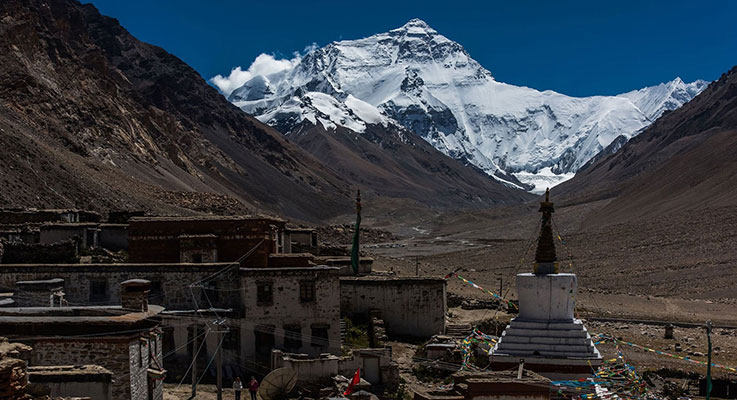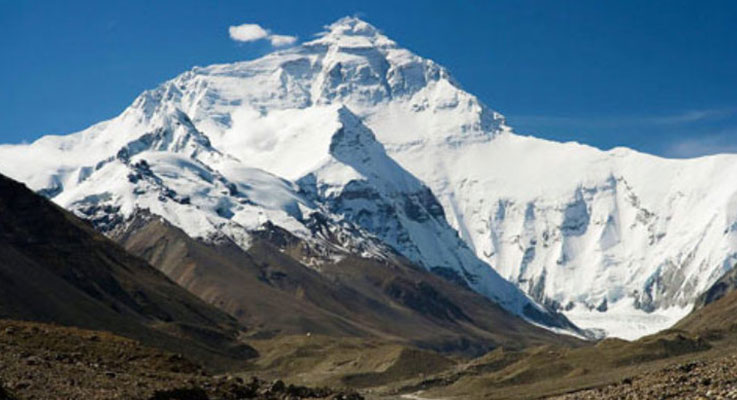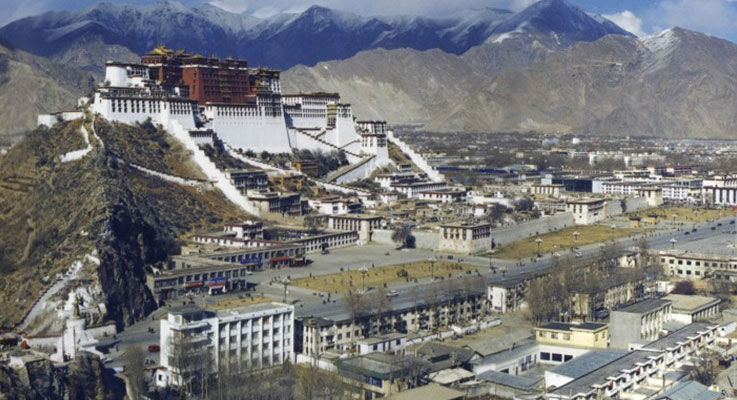-
Day 1
Arrival in Kathmandu (1,345m/4,413 ft)
Upon arriving at Tribhuwan International Airport in Kathmandu, you will be received by our airport representatives who will warmly greet you and transfer to the hotel on a private tourist vehicle. We provide 3-star accommodation in the city and we arrange for a trip briefing with dinner in the evening.
-
Day 2
Sightseeing in Kathmandu
A professional guide and vehicle are provided for a day of sightseeing in and around Kathmandu city. We visit some of the UNESCO World Heritage Sites in the city along with other interesting cultural monuments that dot the valley. These include Boudhanath Stupa (the largest Buddhist shrines in the world), Pashupatinath (the holiest Hindu temple in the world), Durbar Squares (Palaces and fortresses of medieval Kings), along with other popular cultural attractions. We get to observe the lifestyle of Nepalese people, holy sadhus and monks, fascinating history as well as awe-inspiring architecture.
-
Day 3
Fly from Kathmandu to Lhasa (3,660m)
Early morning transfer to the international airport for the hour-long flight to Lhasa. This stunning flight, on a China Southwest Airlines Boeing 757, takes us right across the main Himalayan range and provides us with magnificent mountain views. After landing at Gongar Airport and meeting our Tibetan guide, it is a further 2-hour drive by Land cruiser to Lhasa. It's advisable to rest and take it easy for the remainder of the day due to Lhasa's altitude. Overnight at a hotel.
-
Day 4
Guided sightseeing in Lhasa
We spend this day visiting several of Lhasa's many monasteries in the company of a guide and interpreter. One of these is the Sera Monastery, one of the best-preserved monasteries in Tibet, within its whitewashed walls and golden roofs, several hundred monks live and study. After lunch we'll visit the Norbulingka, the summer palace of the Dalai Lama, as well as the Jokhang Temple. This temple is possibly the most sacred shrine in Tibet and there is always a procession of devout Tibetans through the complex. Surrounding the Jokhang is the Barkor - a maze of narrow cobbled streets that is the central market of Lhasa. Overnight at a hotel.
-
Day 5
Second day of guided sightseeing in Lhasa
In the morning, we visit the Potala Palace which is the crown jewel of Lhasa. It is a spectacular ancient building, containing private quarters of the Dalai Lama as well as numerous grand state rooms and many important chapels. There has been a Palace on this site since the 5th or 6th century, but the present Palace was constructed in the 17th century. After lunch, we visit the Drepung Monastery, which was founded in the 14th century and was once the largest in the world, with a population of around 10,000 monks. These days that figure is down to several hundred, but there is still much here of interest as it was left relatively unscathed during the Cultural Revolution. Overnight at a hotel.
-
Day 6
Drive Lhasa to Gyantse (3,950m) - 261 kms
The day begins with our overland journey towards Rongbuk valley. We follow the Friendship Highway by jeep, we cross the Khamba La at elevation of 4,794m from which there are stunning views across the waters of Yamdrok-tso Lake to the snowy summit of Nazin Kang Sa (7,252m). As we continue our journey to westwards over another high pass the Karo La 5,045m, we can view the spectacular sight of a huge glacier tumbling down to within a few hundred meters of the road. After few hours, we arrive to Gyantse passing the beautiful valleys and colourful Tibetan villages. Overnight at a hotel.
-
Day 7
Drive to Shigatse (3,900m) - 90 kms
This morning we visit the Gyantse Dzong. This fort dates back to the fourteenth century and offers some of the most amazing views of Gyantse and surrounding valleys. Before leaving we also visit the famed Gyantse Kumbum. This magnificent tiered structure is the largest stupa in all of Tibet. If the exquisite gold dome is not enough, this stupa is packed with Tibetan sculptures and paintings.
Thereby, we continue the trip to Shigatse, the second largest city in Tibet. It is only about a 90 kms drive taking us to Shigatse which is a laid back city that provides excellent opportunity for both relaxation and exploration. Thereafter, exploring the local market we will make a detailed visit to the Tashilhunpo Monastery, one of the largest functioning monasteries in Tibet. Overnight at a hotel.
-
Day 8
Drive to Shegar or New Tingri (4,050m) - 244 kms
The views of this desert plateau provide wondrous entertainment as we travel along the Friendship Highway. This stretch is the most spectacular landscape in Tibet. After passing through the small town of Lhatse we will cross Gyatmso La elevation of 5,220m, the highest pass on our journey. The land quickly descends to plains after Gyatmso La. While travelling through the plains we will see many nomadic herders, quiet countryside, and secluded monasteries. Overnight at a hotel.
-
Day 9
Drive to Ronguk (5,000m) - 68 kms
As we leave Shigatse, we turn off the Friendship Highway and head south over the Pang La (5,150m) towards the main Himalayan range that give magnificent view stretching from Makalu to Shishapangma. Below the pass, as we turn the corner into the Rongbuk Valley, we can watch the charming view of Everest than ever. Overnight at a hotel.
-
Day 10
Hike to Everest Base Camp (5,150m) and back to Rongbuk (5,000m) and drive back to Tingri (4,390m) - 65 kms
A highlight of the journey for everyone today as you have the opportunity to explore Everest Base camp. The views of Everest are so close making the mountain seem even more impressive than before. It is a truly breathtaking experience to stare up at the sheer North face of this highest mountain in the world, with Mount Everest towering above you in a looming yet magical way.
After Lunch we get back on Friendship highway and continue our marvellous journey. Overnight at a hotel.
-
Day 11
Drive to Zhangmu (2,300m) - 181 kms
After we leave Tingri, crossing two high passes, Lalung La at altitude of 5,124m and the Shung La at 5,200m. On the way, we are rewarded by the magnificent landscapes of the surrounding peaks including Shishapangma, Cho Oyu, Menlungtse and Gauri Shankar. Then our journey heads towards the arid Tibetan Plateau to Zhangmu on the Nepalese border. As we leave Tibet, it appears an incredibly lush and green. Overnight at a hotel.
-
Day 12
Drive to Kathmandu (1,345m)
Leaving Zhangmu behind, we join the Friendship Bridge passing the Bhote Koshi River and mark the Chinese - Nepalese border. After that short drive, we say good-bye to our Tibetan guide. Then we drive and walk to Nepalese Immigration Control in Kodari, there we have our Nepalese staff, completing the re-entry formalities we'll drive towards Kathmandu, which may take 5 hours, it depends on road and weather conditions. Overnight at a hotel.
-
Day 13
Leisure day in Kathmandu
This is a leisure and free day in Kathmandu for exploration. You are free to go souvenir shopping, spa and more exploration of the city, or extend your trip to include bungee jumping, rafting, mountain biking, Everest mountain flight and other adventurous activities. In the evening, we will have a farewell dinner at Mul Chowk Restaurant’s cozy and elegant dining ambience.
-
Day 14
Departure from Nepal
The trip concludes today. You will be dropped at Kathmandu's Tribhuwan International Airport by our airport representative for your flight departure from Nepal.



